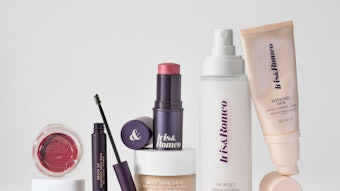The contemporary retail environment revolves largely around choice—a reality especially evident in the bath and body category. As markets become more segmented, consumers are coming to expect products made for their specific needs. To grow sales and market share, brand owners are looking to new tactics and strategies both online and in store.
Recent years have seen bath and body products introduced to the market with additional benefits intended to add value while making them stand out for the consumer. “We are seeing higher level benefits being introduced in the bath and body category—radiance, toning, cellulite reduction and antiaging benefits—when the category used to primarily provide cleansing, some moisturization and a fragrant experience,” said Liz Grubow, vice president, group creative director, LPK Beauty.
Adding such a variety of new benefits to an already crowded retail shelf makes standing out all the more difficult. “The category is growing by leaps and bounds, which is causing confusion at the shelf. Clear definition of benefits, coupled with a robust and meaningful architecture strategy, will greatly benefit the category,” said Grubow. This includes clear and consistent branding to ensure product recognition.
Crowded shelves may also work to a brand’s advantage. “Online, it is difficult to shop a line of products to find which one is right for you. Being able to see that array of product offerings and benefits in comparison helps the consumer decide what is right for her,” said Grubow. Examining packaging to uncover intriguing ingredients—or even the mood of the moment—can trigger a purchase decision.
As with all beauty products, natural and exotic ingredients are the wave of the future. Even bath and body products are not immune to this trend. According to Datamonitor, consumers associate “natural” with wellness. “Unique and exotic ingredients that used to be found primarily in spa and super premium product lines are now being introduced at mass,” said Grubow. However, sales of body washes are being driven by a focus on seasonal needs and new product launches. As a result, Datamonitor expects this segment to be worth $9.4 billion by 2010, but with a growth rate that is expected to fall slightly in the next five years. “Bath and body can learn from the hair care category how to drive regimen and elevate body care needs and experience,” acknowledged Grubow.
As always, word of mouth remains the most effective marketing tool. “A small business such as ours cannot afford to take out consistent advertising space in national consumer magazines. We find that our most effective investment is to choose specific products and try to position them in consumer magazines through our public relations firm,” said Deb Ludington, founder of Sweet Grass Farm, a natural body product, home care and soap company. As a result, editorial content becomes key, as consumers look to beauty editors for guidance.
Fragrance and Retail
While packaging can draw a consumer to a product, fragrance is the key selling point in the bath and body category, as it influences mood and triggers memories and emotion. “In my opinion, fragrance is the primary focus at the retail level, followed closely by attractiveness of packaging and then price points,” said Ludington.
Even for products based on essential oils, scent drives the sale—particularly as consumers sample and sniff for themselves—and brands are smart to look to the fragrance market and its retailers for POP strategies. “Certainly, there are opportunities at the shelf that can truly bring (fragrance) to life and make the shopping experience more engaging. As Sephora changed the dynamic and ease by which consumers shop and experience fragrances, similar learnings could be leveraged for bath and body products at mass,” explained Grubow.
Making it POP
When consumers are in the stores, advertising, ingredients and word-of-mouth play a part in their final purchasing decisions. Yet the packaging must still speak the brand’s message, while appealing to consumers through creative displays.
“I’ve learned that packaging and display are key—and that related press drives awareness. When a customer walks into a store, the packaging and display need to stand out from the myriad of other products,” said Natalie Geary, MD, founder, vedaPure.
In each distribution channel, POP materials differ as they take advantage of the medium to optimize the experience of the consumer. “Point-of-purchase material differs in each environment, especially bricks-and-mortar stores. Many stores have guidelines and we aim to create attractive, eye-catching and valuable promotional material to fit within each store’s parameters,” said Heather Reier, president and founder of Cake Beauty.
Product names, such as Cake Beauty’s Sweet Cheeks or It’s a Slice, can also be used to grab a consumer’s attention. For some brands, grabbing the consumer’s attention includes finding a niche and sticking with it. “(A brand needs to choose) a niche that is lasting, not based on some remote ingredient that people will lose interest in,” said Geary. Within online media, however, the traditional POP must be creatively and innovatively altered to appeal to the consumer who shops with a click.
Two-dimensional Display
Online consumers are looking for products that fit their needs—with the disadvantage of being unable to smell and feel them. The virtual world must work around the absence of such traditional selling points, and this puts pressure on the products’ ingredients and benefits to make them stand out from a crowd. Product selection in the online world can be easily double or triple that of a traditional retail environment.
“Making an item stand out—packaging obviously plays a key role here; but given the unique nature of the Internet store, packaging that pops isn’t of the same level of impact as on a conventional store shelf,” said David Stephan, manager of beauty and spa for drugstore.com.
Traditional POP displays do not exist virtually, but channel winners have learned to capitalize on the options that are available. “Online we can call attention to a particular product or brand on multiple pages as a featured item. This is our virtual version of the end of the aisle or point-of-purchase display. It gives the product premium exposure on multiple frequently navigated pages on the site,” said Stephan.
While the Internet can provide creative freedom, it is important to make sure that copy and imagery showcase the brand in the best light. “Our Internet site is the easiest of all in terms of POP. We simply take great photographs and write interesting, effective copy. That’s about all our visitors require to make an Internet purchase,” said Ludington. The brand also can tell its story in a more complete fashion here than in the traditional retail format. “Bringing the product and benefit story to life in a holistic, compelling, engaging and proprietary manner is the true differentiator,” said Grubow.
Just as in the traditional retail setting, placement can affect a brand online. “To make an item stand out on an Internet page, it’s usually best to showcase or feature a brand prominently on one of the category tabs and call attention to it graphically within an offer,” said Stephan.
Standing out is the name of the game in any channel. Research conducted by Datamonitor in 2006 deemed bath and shower products the most relevant personal care product format by both European and U.S. consumers for achieving a sense of wellness. For a brand to capitalize on the wellness trend, it must examine itself through the eyes of a consumer examining the retail real estate.










